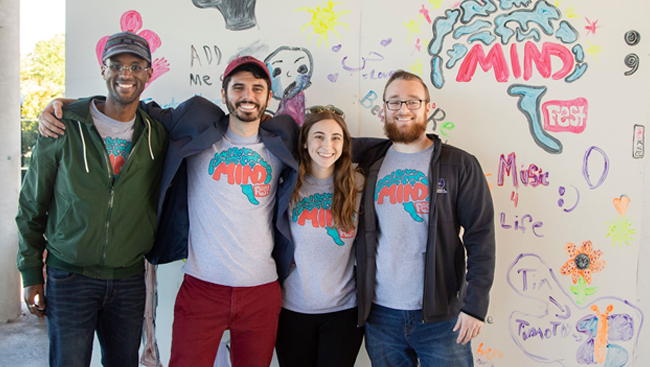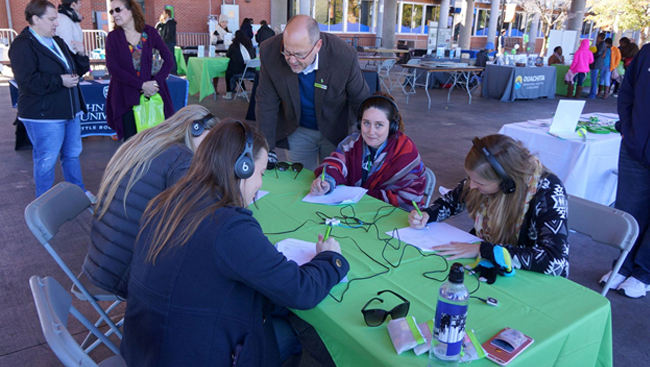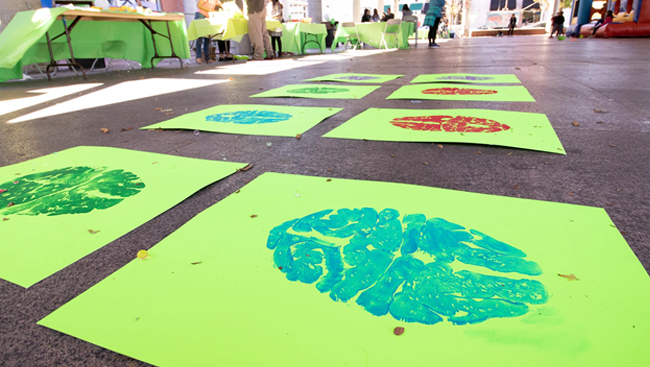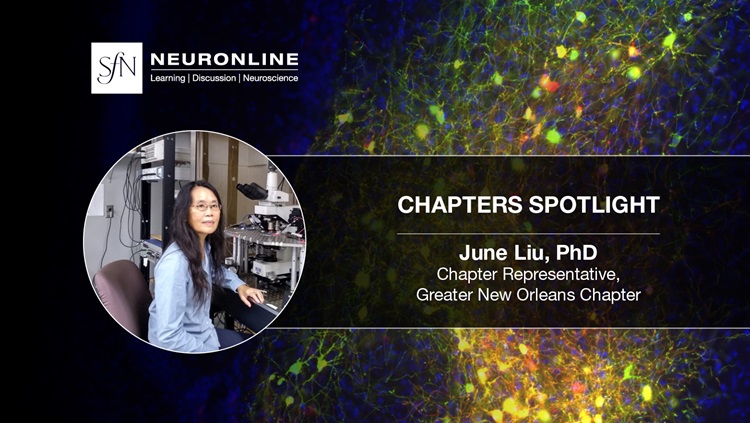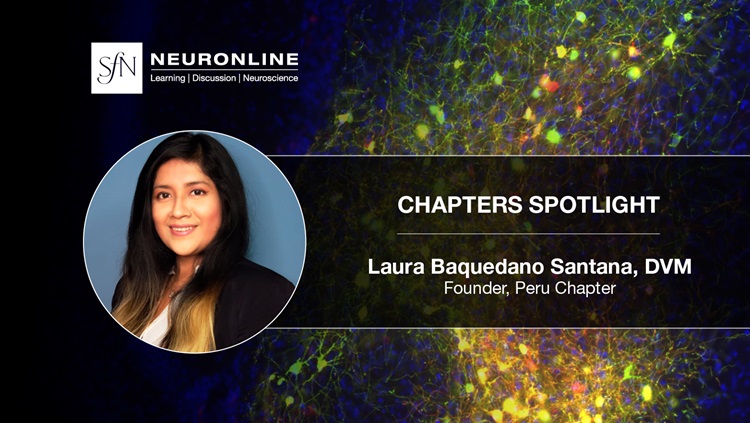I never saw myself running a nonprofit for mental health — it wasn’t an ambition of mine. All my life I pursued traditional science and medicine: the lab, the clinic, the white coat. During my work at the Psychiatric Research Institute in Little Rock, Arkansas, however, I became interested in mental health advocacy when I learned how heavily environment impacts mental state — almost as much as brain chemistry or neural wiring.
|
The primary members of the MIND Coalition, including cofounders Stallmann and Lovan, stand in front of an art wall at MINDfest 2018 that invited attendees to paint what mental health means to them. From left to right: Nathan Jones, Bradford Martins, Rebecca Stallmann, and Elijah Lovan. |
In my clinical and research training I’d heard stories of abuse, disparity, and disadvantage that made it clear if I wanted to improve mental health, I couldn’t ignore the role of community. I recognized the necessity of stepping out of the lab and connecting with others to make a bigger impact than any one person can have alone.
One day a friend posted that it was Mental Illness Awareness Day. It was my first time hearing of it. As a future psychiatrist and as a neuroscientist, I couldn't believe I was working in the psychiatric hub of Arkansas and had no idea this initiative existed. I thought about the impact increased mental health awareness could have on the community at large and knew I had to figure out how to get this information out there.
I did some research to find out who was behind Mental Illness Awareness Week — the National Alliance on Mental Illness (NAMI). I found our state had a chapter and realized I already had a connection with the then-board president. I asked him how I could get involved in the organization, and he invited me to a board meeting to find out what the association did, and to share my ideas on how to improve mental health awareness.
The board members loved them so much they asked me to join the board of directors — which I did. It was there that I started learning about how nonprofits are run and the basics of community-centered advocacy.
|
Luke Kramer, executive director of mental health advocacy group The STARR Coalition, led attendees in an audio simulation of schizophrenia. |
Around this time, I met two people through my university who had similar goals of improving mental illness awareness in Arkansas. We discussed the possibility of starting our own advocacy group that could facilitate collaboration among the various mental health organizations in the community.
It was just three of us, but we decided to do it.
We developed our idea into a nonprofit called the Mental Illness and Neurodevelopmental Disorders Coalition, or MIND Coalition. We contacted groups in our community, people who were interested in mental illness and mental health, and people who felt that in some way mental health had affected their lives and wanted to be a part of it.
We also put together an event, which we called MINDfest, to promote mental health to the general public. We involved groups from across the mental health spectrum — from clinicians and treatment facilities to artists and yoga studios — and brought them together in one setting to offer resources to the community. The event was extremely well received and reached hundreds of people in central Arkansas.
|
A matching game at MINDfest 2018. |
If I had to offer advice through my experience leading an established nonprofit and starting a new advocacy group, the most important lesson I’ve learned is to find other people who are also interested in your passion. Our idea of the mental health festival would have been a huge undertaking for any one person, but when you're able to delegate tasks and have everybody reach out to other people, you start forming networks. You realize many people support the same cause you're supporting and are looking for ways to help.
We had no idea what we were doing our first year, and there was a lot of trial and error, but building a group of people who were interested in it was the start. Once we planted the seed, and kept finding people to nurture it, it only continued to grow. Within a year of our first MINDfest event, a group from northwest Arkansas contacted us and we helped establish a second festival, MINDfest Northwest Arkansas (NWA), in their community.
It's been about three years since I got started with NAMI Arkansas, and the MIND Coalition has existed for about two. Over the course of those three years, I've learned so much about nonprofits and advocacy. I'm the current president of NAMI Arkansas, and both organizations continue to grow every year by reaching more people in the community.
Because of my continued role in the MIND Coalition and NAMI Arkansas, I am regularly asked how to get involved in mental health advocacy. I think neuroscience and mental health are two of the easiest causes to get people to rally behind. Every one of us has a brain. It's a commonality every single person in the world shares and can relate to. If you’re able to show even the slightest glimpse of what's going on inside that brain, it gets people excited, and it’s that excitement and passion that fuels progress in the field and the community.

